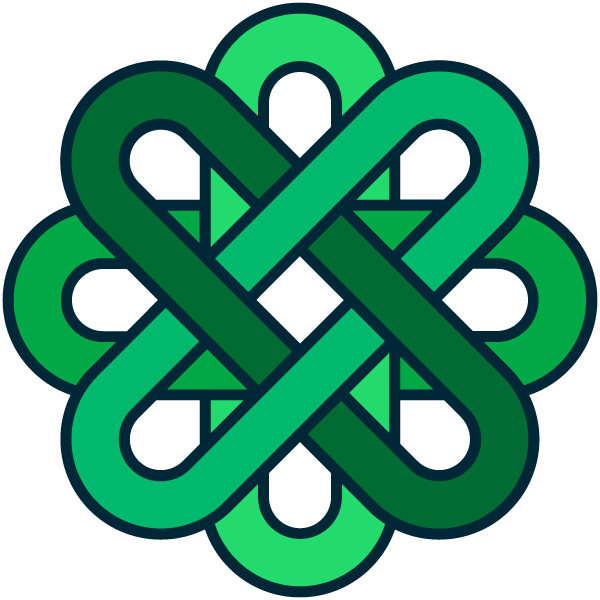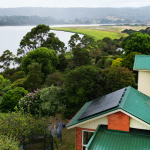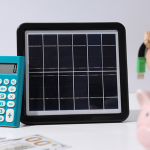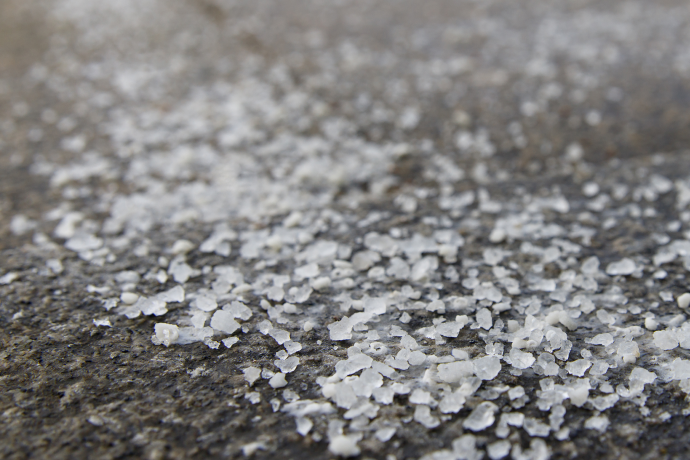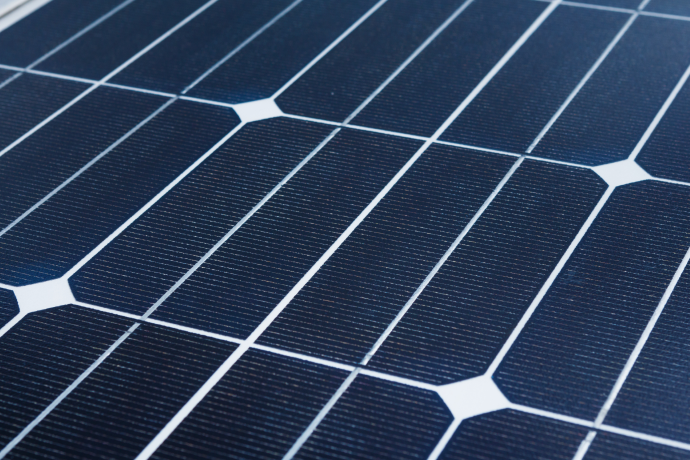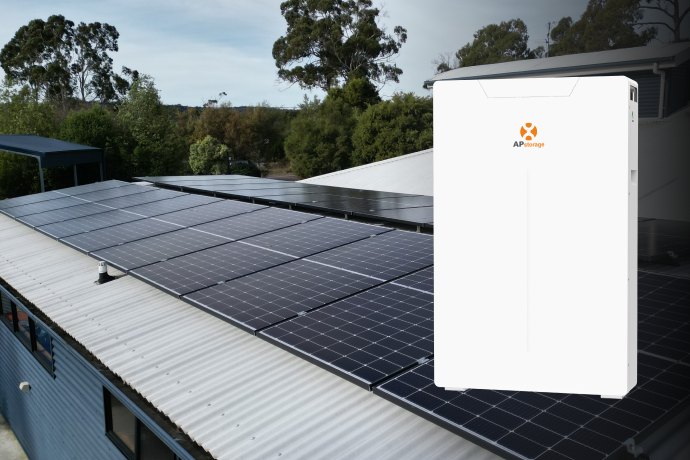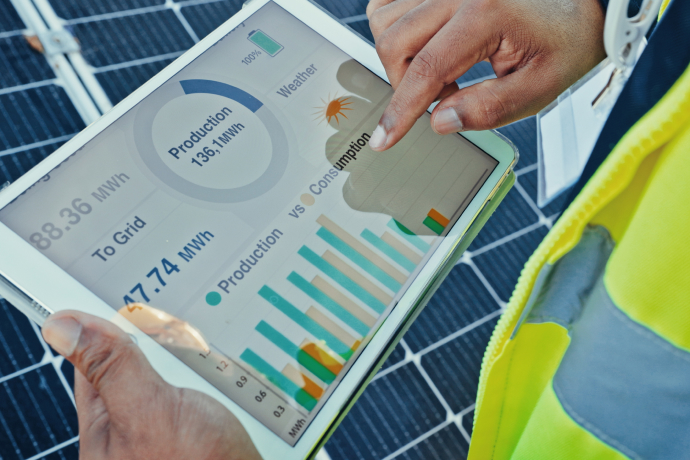When looking into solar systems, it is beneficial to understand how they work, and what is required to satisfactorily convert sunlight into electricity. Along with the solar panels themselves, solar inverters are one of the most important pieces of equipment in a solar system. They convert the direct current energy (DC) from the solar panels to usable electricity in the form of alternating current (AC). As most appliances in a home run on AC and not DC, each solar system must have an inverter to change the output collected by the solar panels. Taking into account how important solar inverters are, we have compiled a guide to explain what they are, how they work, types of solar inverters, and how to choose the right one for your system.
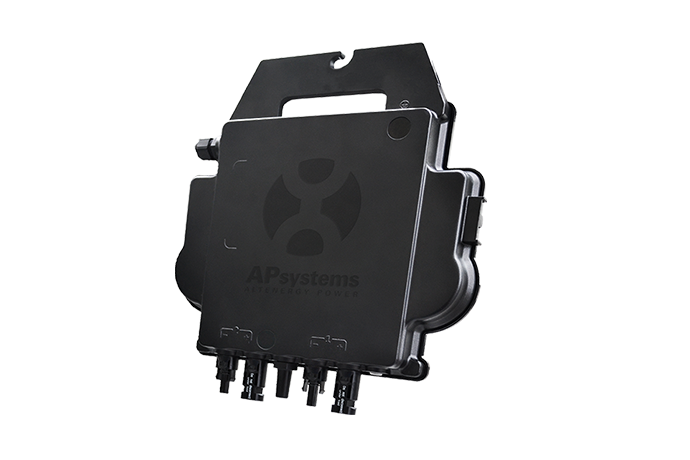
What Is a Solar Inverter?
A solar inverter is a piece of electrical equipment that converts the generated energy collected from the solar panels into electrical energy that can be used to power appliances. In a solar system, the panels are like the body and the solar inverter is the brain that turns the electricity from the sunlight (DC electricity) into electricity you can use in your home (AC electricity). Without an inverter you wouldn’t be able to use the power from your solar panels to run your household devices. It also works with battery storage systems converting DC power from the batteries into AC power so you can use stored energy from your batteries whenever you need it.
Inverters come in all different shapes and sizes but essentially are a box that houses electronic equipment to convert one type of electrical energy into another. They are usually mounted on a wall or a roof with wiring connecting the input of solar DC energy on one side and wiring supplying the converted AC electricity to the home.
The Role of a Solar Inverter
Solar inverters play a fundamental role in harnessing the sun’s energy and converting it to electricity. A solar inverter bridges the gap between solar panels and powering electrical appliances. They are an essential component in a solar system because they have four crucial jobs. These are:
- Electricity conversion. The main role for a solar inverter is electricity conversion. Solar inverters take the DC electricity produced by the solar panels and convert it into AC electricity which is the power most electrical devices and grids need to operate.
- Power maximisation. Most solar inverters have maximum power point tracking (MPPT) which is a built-in feature that ensures solar panels are always working at their maximum available efficiency, taking into account the current weather conditions, shading, etc. This system ensures that your solar panels are operating at maximum efficiency throughout the varying conditions of the day.
- Regulating AC and DC power to protect the solar system. The intensity of the sun varies over a day, so the solar array changes. This means the DC energy being captured needs to be regulated to avoid overvoltage or undervoltage in the system. A solar inverter is the component that regulates the flow of electricity in a solar system. It does this by monitoring voltage going in and out and adjusting output when required. The solar inverter regulates and synchronises the frequency change so that the solar system has the right power specs to be connected to the grid safely.
- Monitoring the system. Most solar inverters are connected to Wi-Fi and can monitor the entire connected solar system, generally accessible in real-time via an app. A display panel on the inverter provides real time information about the operation and performance of the solar panels and inverter. The solar inverter monitors everything from power output and system efficiency through to energy generation, allowing you to monitor performance in real-time, as well as importing and exporting usage data.

How Does a Solar Inverter Work?
Solar inverters convert the direct current (DC) from the solar panels to usable electricity for the home in the form of alternating current (AC). Let’s take a look at how this occurs from start to finish.
- Solar panels generate DC power. Solar photovoltaic panels capture and convert sunlight into DC electricity. This is then transmitted to the inverter through cables. The DC power can be transmitted from a single panel or a series of panels connected to a string, depending on the solar system setup.
- Power conversion from DC to AC. A solar inverter has a series of transistors (electronic switches) inside, which work together to convert the DC electricity to AC electricity. DC is a linear type of electrical current and only flows in one direction. AC is a more erratic current that oscillates and changes its flow. To change the flow of the current and convert DC to AC, the transistors switch on and off quickly at around 3000 times a minute. This rapid switching creates a pulse of current that alternates between positive and negative and disrupts the linear flow. Inductors and capacitors in the inverter then regulate and stabilise the energy to form a sinusoidal wave which is the most common type of AC.
- Grid synchronisation. With the AC power produced, the inverter now synchronises the AC output with the grid by matching the AC output waveforms with the grid’s waveform. This ensures that the solar electricity generated can be seamlessly integrated with the existing power supply.
- Power sent into home. After the AC has been synchronised with the power supply, the energy is sent into the electrical grid of the home. From there it is distributed through the home’s electrical appliances.
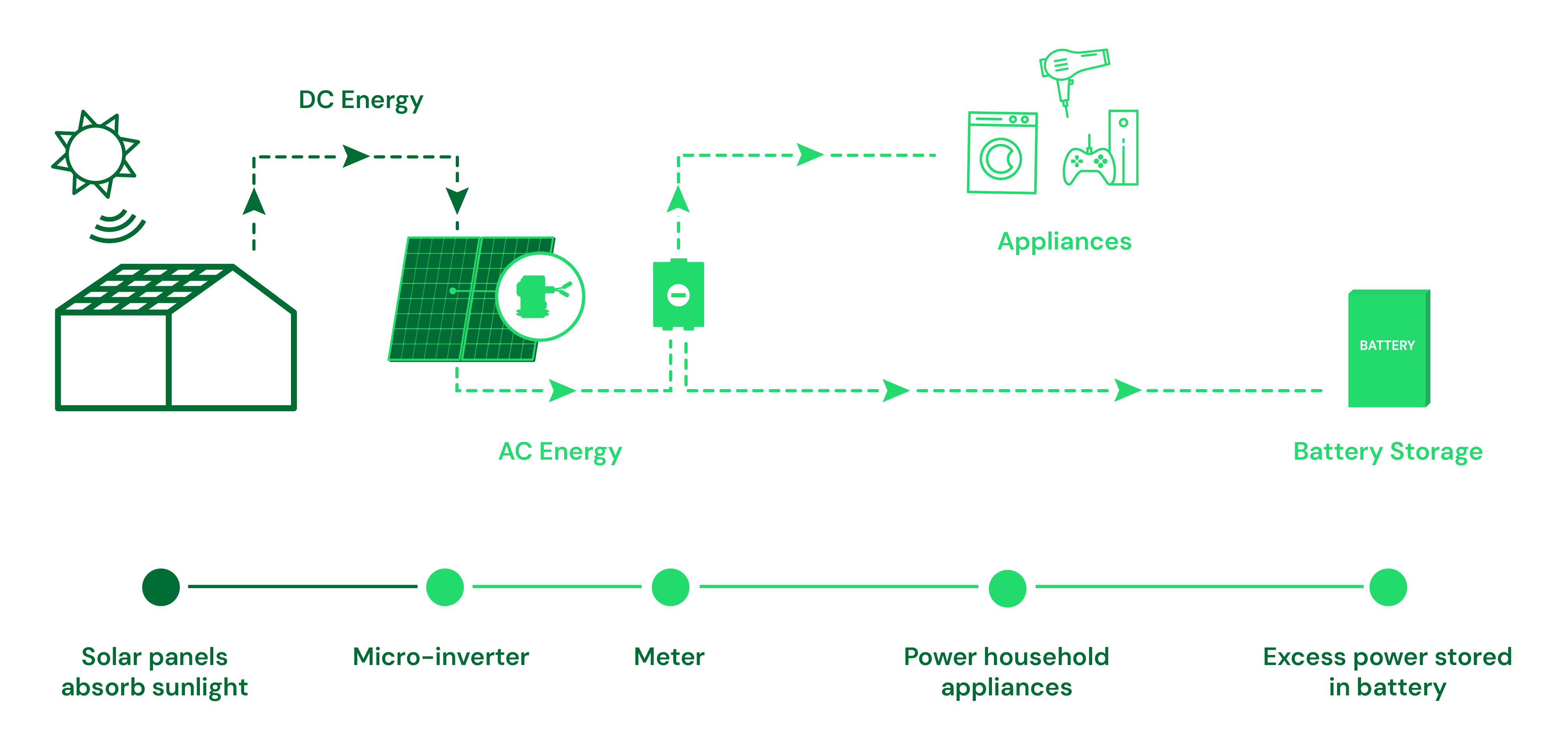
Types of solar inverters
With an understanding of how solar inverters work, it is important to look at the main types of solar inverters to choose from. There are different types of solar inverters and technology but they all do the same thing. Let’s take a look at the main types of solar inverters, with their pros and cons.
String inverters
A string inverter (known as a central inverter) is called a string because it connects a series of solar panels together. The panels in a string are connected by their positive and negative terminals, creating a single path for the electric current which connects to a central unit. String inverters are the most common type of solar inverter for residential purposes and there is usually one string inverter per solar system.
- Pros:
- Cost effective: String inverters are the most cost effective solar inverters. That is because they have a more simple design than other inverters.
- High efficiency: These inverters are extremely efficient and can convert DC energy into AC energy at a rate of up to 98%.
- Low maintenance: As string inverters are stored in a central location, they are easy to maintain, monitor and repair should any issues occur.
- Easy to install: As string inverters are an established technology, they are easy to install. The majority of installers and electricians will have experience with string inverter installation.
- Compatibility: String inverters are compatible with a wide variety of solar panel brands and models.
- Cons:
- Limited performance monitoring: String inverters do not have individual panel level tracking which makes it difficult to monitor solar system performance.
- More space required: String inverters need more space for installation than other inverters. This can be challenging for those with a small residential property or a business with limited space.
- Shading: If one panel is shaded or partially shaded, it lowers the efficiency of the whole string of panels.
Microinverters
Microinverters are individual units that are mounted directly onto each solar panel. This means that each panel has its own transformer, independent of its neighbours. Each microinverter is plugged into a trunking cable, which connects each of the individual microinverters to the home’s switchboard.
- Pros:
- More efficient: Microinverters are more efficient as they can work by sanding alone and not as part of the entire solar panel system. This means every solar panel can perform at maximum potential and any solar panels that are not working will not impact the other panels efficiency.
- Improved MPPT: When MPPT is applied to one solar panel compared to a solar system as a whole, performance increases. It is easier to adjust the voltage load from individual inverters for maximum output power than via a central system.
- Easy to expand: Expanding your solar system means adding more panels and this is easy to do with microinverters. There is no restringing to worry about and you don’t need to buy a second central inverter.
- Excellent monitoring: Microinverters have web-based real time monitoring on a panel by panel basis. The system is continuously monitoring the health of your solar system and checking for potential problems, and can be accessed via the display screen, via an app or the internet.
- Safety: Microinverters are safer than other inverters because of the direct conversion from DC to AC on each panel. Unlike other inverters, there is no need for high voltage DC wiring which improves the safety of owners and installers.
- Cons:
- More expensive: Microinverters generally have higher upfront costs compared with string inverters.
Power optimisers
Power optimisers are similar to microinverters as they maximise the amount of energy each solar module can produce, however, they do not convert the DC electricity to AC. The optimiser attaches to each solar panel and converts the DC electricity to an optimised voltage and current, which is then sent to a central inverter for conversion to AC electricity.
- Pros:
- Improve efficiency: Power optimisers improve the power output from each panel and ensure maximum efficiency from the solar system as a whole. Even under less than ideal conditions, like cloud or shade, power optimisers help produce the maximum amount of energy possible.
- Improved monitoring: Some power optimisers have advanced monitoring equipment that can provide real time data on each panel’s performance.
- Extend panel lifespan: Power optimisers can extend the longevity of panels as they reduce the stress and strain on each individual panel.
- Cons:
- Cost: Installation costs are a lot higher than string inverters as power optimisers are installed on every panel.
- Limited choice: As power optimisers are relatively new to the market, there are limited choices in manufacturers that supply them.
- Doesn’t convert energy: Although they play a part in energy conversion and energy efficiency, power optimisers do not convert DC to AC directly.
Hybrid inverters
Hybrid inverters combine a solar inverter and a battery inverter into a single unit. Battery inverters convert DC power from the battery into AC power, while solar inverters convert this energy derived from the solar panels. Hybrid inverters are advanced inverters that can operate in different modes and handle power from solar panels, solar batteries and the grid simultaneously. They convert DC power from the strings of solar panels to AC power to use in the home. Any excess energy is then sent to the connected battery system.
- Pros:
- Power resilience: Hybrid inverters ensure power is stored in batteries to use when there is a power outage or after sunlight hours.
- Easily retrofitted with a battery: Hybrid inverters can be easily retrofitted with battery storage systems. For those wanting to add a battery later, you can do this with a hybrid inverter unlike other inverters that may need to be replaced.
- Simple energy monitoring: Solar power and battery storage can be monitored by a single display interface with a hybrid inverter, making it easier to keep track of energy usage and performance.
- Cons:
- More expensive: Hybrid inverters are generally more expensive due to their need for additional equipment like batteries.
- Less future design flexibility: A hybrid inverter is designed to work with a specific number of panels and batteries. If you want to upgrade your solar panel system, it may be harder with a hybrid inverter as it is not as compatible with larger systems compared to standard inverters.
Tips for Choosing the Right Size Inverter
It is essential to choose the right size inverter for your solar system to ensure it runs smoothly and efficiently. Follow these tips when sizing an inverter:
- Think of the size of the solar system you have: As a basic estimate, the size of the solar system you have or are about to install should correlate with the size of your inverter. The purpose of the inverter is to convert DC produced by the solar panels to AC for use in the home. This means the inverter needs to match the amount of energy the solar system can produce. Solar systems are generally sized in kilowatts so aim to match the kilowatts of the solar system to the kilowatts of the inverter.
- Calculate device wattage: Calculate the amount of wattage used by devices in the home. Consider appliances like fridges, fans, lights and other small appliances used throughout the day. To calculate the device wattage, you need to determine the power consumption rating of each appliance, multiply it by the hours used per day and add all the appliances for your daily wattage use approximation. If you do not have a solar system yet, this will be a good indication for the size of the solar system you require as well as the inverter size.
- Consider the Solar Inverter Efficiency: Inverters have energy efficiency ratings that can be helpful to consider when choosing the right size. Higher efficiency inverters like microinverters can be a smaller size than other types of inverters that are less efficient.
- Consult with Professionals: When choosing the right size inverter, it is always wise to consult with professionals. The team at Tasmanian Safer Solar are experts in solar systems including inverters and accessories.
Solar inverters are one of the most important components of a solar system. Without them, the electricity generated by the sun’s energy would not be able to be used in homes. Our comprehensive guide explains everything you need to know about solar inverters and their crucial role in the renewable energy of solar power.
